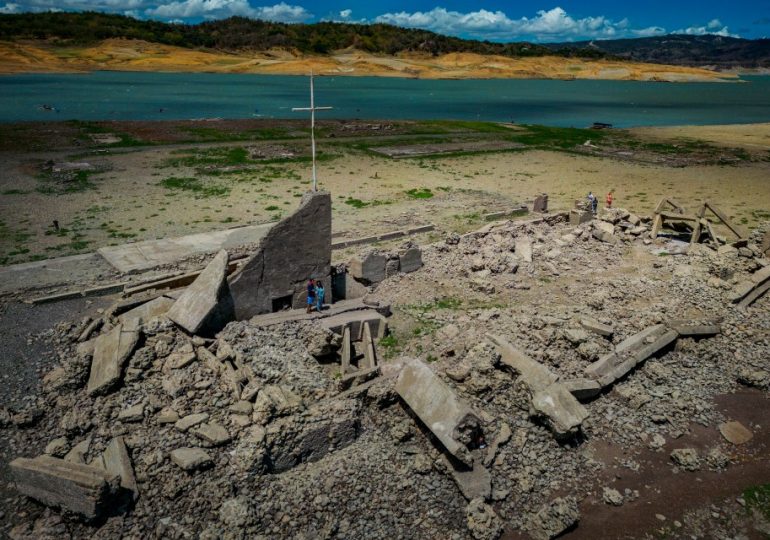A MYSTERIOUS 300-year-old sunken town has re-emerged from a dried up dam during a heatwave.
Ruins of the old church and houses of the former Pantabangan town in the Philippines have reappeared after water levels receded.
GettyOld town of Pantabangan in Nueva Ecija province, Philippines was flooded to make way for a dam[/caption]
GettyThe sunken town re-emerged from water due to the drought[/caption]
GettyTombstones in the cemetery of the old sunken town lie empty after the remains were moved to a new one[/caption]
The village was flooded in the 1970s to make way for the construction of the reservoir which powers a hydro-station and supplies water to farmers.
A 19th century chapel, a municipal building and a cemetery along with 20,000 acres of farmland were all submerged under the new lake.
Around 1,300 people had to leave their homes behind to relocate to a higher ground overlooking one of the Asia’s largest dams.
The remains of the deceased also had to be moved to a new cemetery before the city disappeared under the reservoir.
The town remains hidden underwater for most of the year, with only church cross looming out.
But during the hot and dry season, the remnants of the lost village can be glimpsed by tourists visiting the site.
Images show the rubble of homes and tombstones from the public cemetery emerge in the mud.
Curious tourists are seen posing among the scattered bricks and on top of the stand of a statue that’s now gone.
The 300-year-old village is considered a cultural heritage zone and visitors can pay a humble fee of $5 to enter the site for 40 minutes.
They would also have to pay for the boat ride that takes them to the centre of the reservoir.
The centuries-old settlement reappeared six times since the dam was built but only for a short while.
Marlon Paladin, an engineer with the state agency that operates the country’s dams, told AFP: “This is the longest time (it was visible) based on my experience.”
This year, the reservoir’s water level has fallen by 50m from its usual 221m, according to the state weather forecaster.
Following months of no-rain, half of the country’s provinces are experiencing drought with scorching temperatures reaching a high of 50C.
The extreme heat is amplified by El Nino, a weather phenomenon in which surface waters in the Pacific Ocean are unusually warm.
GettyTourists visit the site posing on the stand of a statue which is now gone[/caption]
GettyThe village re-appeared six times in the past but this is the longest it stayed visible[/caption]
Leave a comment








